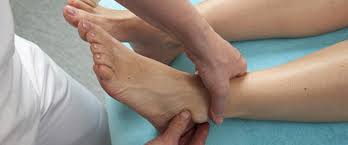*This page may contain affiliate links. When you buy through these links, we may earn a small commission at no extra cost to you.
Tendonitis is generally defined as an inflammation or swelling of a tendon.
Tenosynovitis ankle is a condition in which inflammation occurs in the sheath lining surrounding the tendon.
The sheath is basically a cord that joins muscles to bones. Overuse of ankles or an injury is responsible for the development of this condition.
Based on the part of the body affected, there can be various types of tendonitis and tenosynovitis problems.
Other than ankle tenosynovitis, these are Rotator cuff tendonitis, DeQuervain’s tenosynovitis, Medial epicondylitis, Lateral epicondylitis, etc.
Causes of Tenosynovitis Ankle

The various reasons responsible for the development of tendonitis and tenosynovitis ankle are as follows:
- Any kind of allergic or autoimmune disorder
- Overuse of affected ankle
- Any kind of trauma to the ankle which is left untreated
- Any kind of infection or injury to the ankle leading to the development of this medical condition.
- Recurring or abnormal movement of ankle or foot.
Symptoms of Tenosynovitis Ankle
Some of the basic symptoms of tenosynovitis ankle are:
- Intense pain causes difficulty in the movement of joints
- The motion of the ankle joint becomes limited
- Inflammation occurs on a tendon sheath
- The ankle joint area becomes heated, and redness appears on the affected area
Complications with Tenosynovitis Ankle
Keep in mind that if the tenosynovitis ankle is not treated on time, the tendon may become restricted on a permanent level or may get ruptured.
Even the affected joint may become stiff if left untreated.
Infection caused in the tendon may get spread to other parts of your body and can result in infectious tenosynovitis, which is a serious and threatening medical condition affecting your limb.
Prevention and Treatment of Tenosynovitis Ankle
One can take various preventive measures and follow certain treatment tips to avoid and treat the development of the tenosynovitis ankle condition.
Some of these treatment options for tendon sheath inflammation include:
- Avoid moving the affected ankle and give proper rest to the affected tendons as much as possible for its early recovery.
- Make use of ankle braces or splints, which will help in immobilizing the tendon. This helps in the early healing of the affected ankle.
- Try to increase the flexibility of your ankle by introducing strong and healthy fitness programs in your daily lifestyle.
- Avoid injuries that directly hurt your ankle in any major or minor way. Take proper steps to deal with injury so that they get completely healed up.
- The application of ice packs on the affected area provides tremendous relief to the pain caused by the tenosynovitis ankle. Regular use of ice bags helps in the early healing of an affected ankle.
- Applications of heating pads on the affected area also help in providing relief to the pain and swelling caused by this painful condition.
It is important to know that tendon sheath inflammation or tenosynovitis ankle can be prevented when you avoid various types of forceful motions or movements that are sometimes repetitive.
Strengthening your feet and ankle joints by using the best exercising equipment daily can also help in preventing the injury of tendons.
Care that if you get a cut on your hand, feet, or any other part, clean the wound properly to avoid the infection of tendon sheath inflammation.
Incoming search terms:- tenosynovitis ankle
- ankle tenosynovitis
- tenosynovitis of foot and ankle






